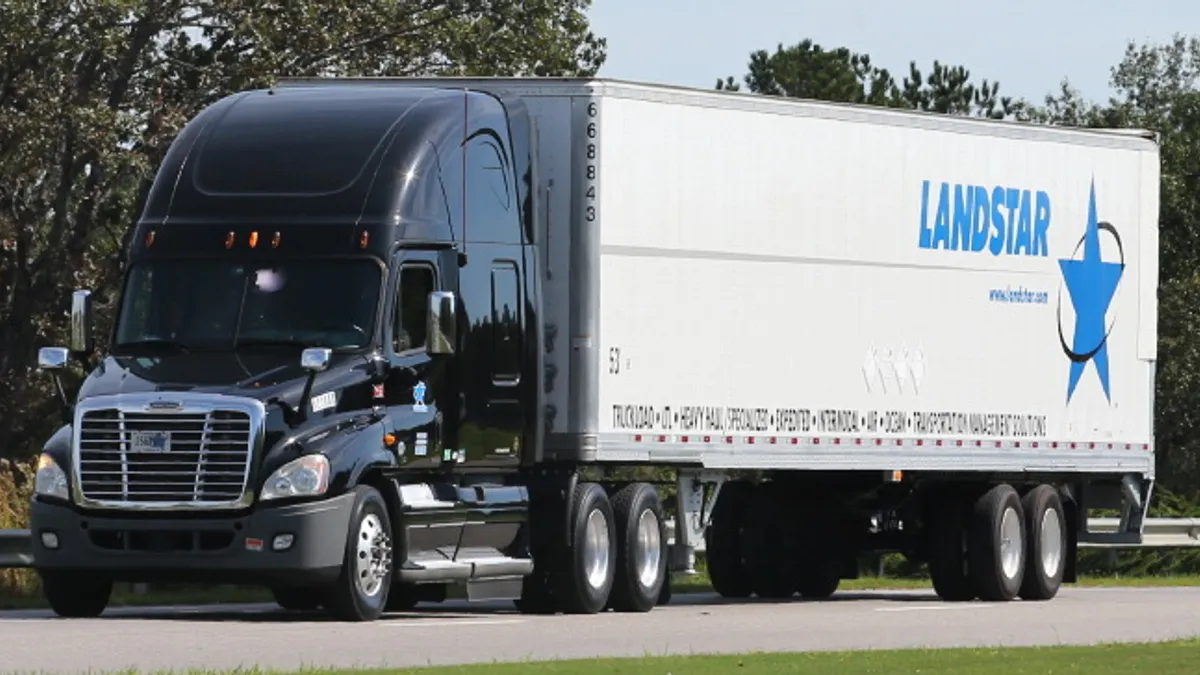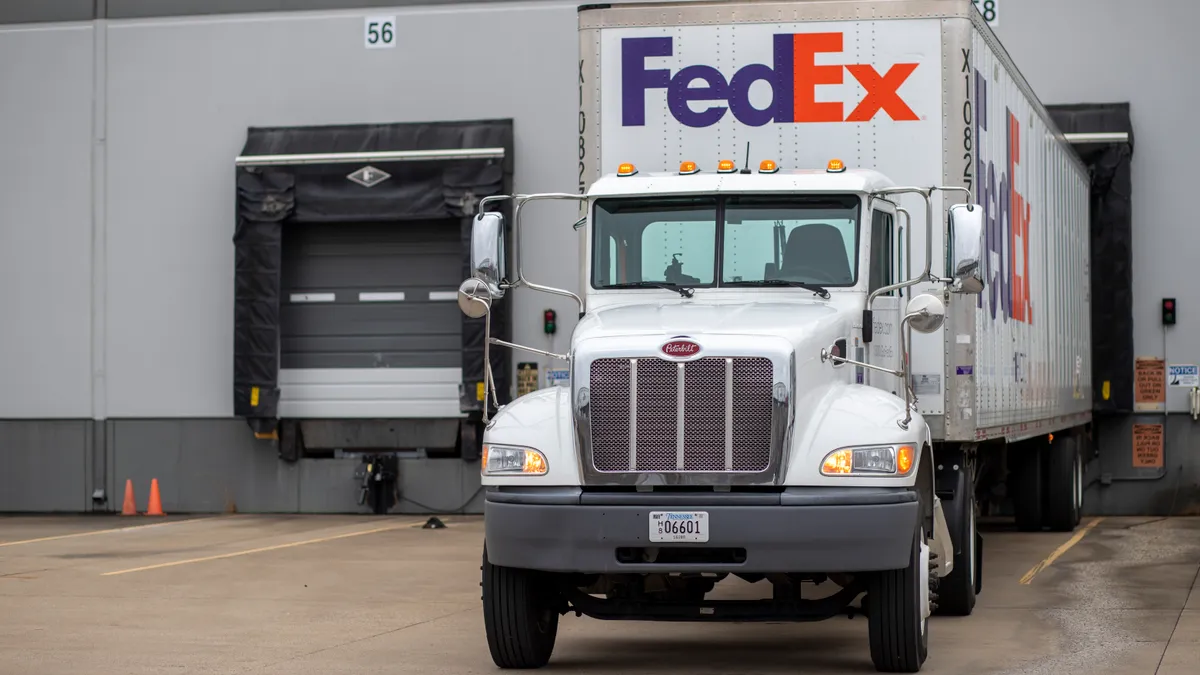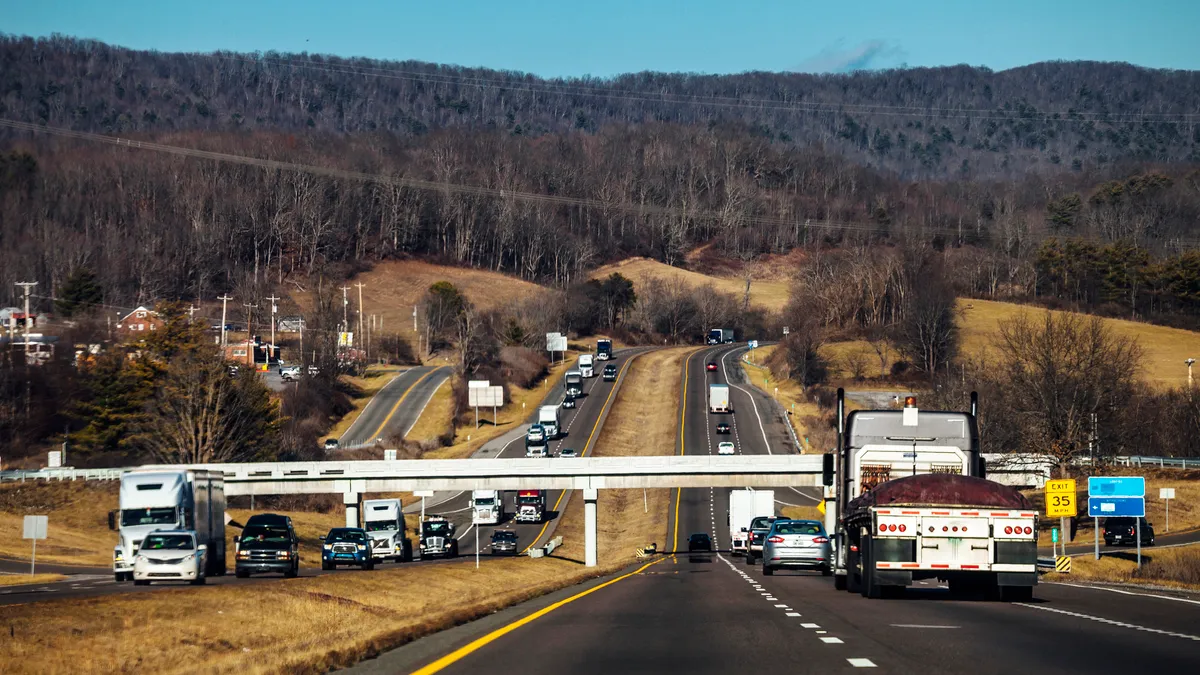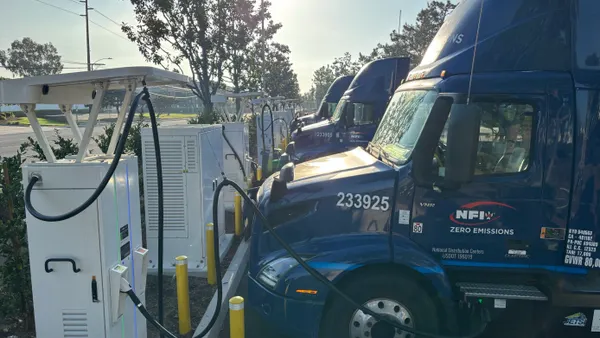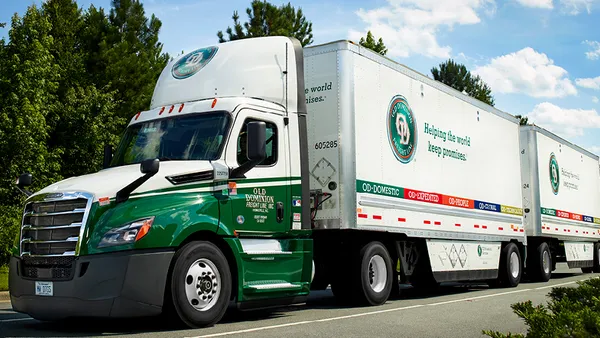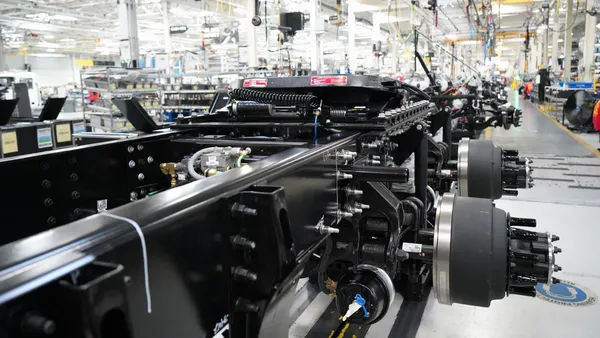Dive Brief:
- With the effects of COVID-19 gaining traction in the spring, Landstar System's volumes were down between 20% to 30% in April, the company reported Thursday in an earnings conference call. Landstar revenues dropped 10.2% in Q1, year over year. Company net income dropped 35.4% year over year to $40.9 million.
- Jim Gattoni, Landstar CEO, said impact from the COVID-19 pandemic hit the company's performance at the end of March. So, coronavirus effects on the quarter, which ended March 28, were limited. Nevertheless, Gattoni said the speed of the decreasing industrial business just after Q1 ended were like "nothing experienced in the history of the company."
- Idled industrial plants saw Landstar do less business with manufacturers. The company reported automotive loads were 8.6% of its revenue in Q1 2019. That dropped to 7.4% of revenue in Q1 2020 and to 2% in much of April. Machinery stayed about the same, at 13.4% of revenue. But energy-related revenue shot up, from 2.4% in Q1 2019, to 3.4% in Q1 2020. Not surprisingly, foodstuffs went up, from 4% of revenue in Q1 2019, to 4.7% in Q1 2020.

Dive Insight:
In his opening remarks, Gattoni alluded to pasts crises that have sharpened the skills of the fleet. The crises have caused a need to diversify their books of business following the Great Recession of 2007-2009, and the 9/11 terrorist attacks. Gattoni referred to both events in his Thursday call, while noting the new challenge — a rapid worldwide slowdown or shutdown of many points of commerce — is unlike anything the company has seen. Gattoni says Landstar expects a serious challenge responding to the downturn of 2020.
"Thankfully, Landstar's variable business model is highly resilient to rapid expansions and contractions in demand for freight transportation services," Gattoni told investors and analysts.
Gattoni noted how the market shifted to high demand for perishable consumer goods and medical supplies. Still, Gattoni expressed surprise at the drop in industrial business as Q1 2020 ended. He told investors that dispatch truckload volume in the first 12 of the 13 weeks of Q1 2020 was about 5% below the business volume of the comparable weeks of Q1 2019. The last week of March 2020 then saw a 14% drop in dispatched TL volume, compared to the final week of Q1 2019.
"This was one of the swiftest and most dramatic reductions in week-to-week load volumes in the history of the company," said Gattoni. The drastic reduction was the result of states issuing stay-at-home orders and a number of industrial plants idling their work centers, Gattoni said.
The biggest challenge for many fleets and OEMs will be Q2, not Q1, analysts and economists have forecasted. Rajeev Dhawan, director of the Economic Forecasting Center at the College of Business at Georgia State University, told Transport Dive that "the next three months will be horrendous by any metric."
And essential goods, a balancing factor in some Q1 earnings, won't work as a safety net forever. Knight-Swift Transportation reported "essential goods" were 61% of its customer mix before the pandemic, and that share jumped to 72% by early April.
But grocery shelves, many emptied during the pandemic panic buying, are being restocked. Spot rates began to decline in late March, according to DAT Solutions, with smaller carriers complaining there is not enough freight to go around now.
For Landstar, automotive is a bigger concern because so many U.S. plants are idled. Landstar officials said automotive business dropped further in April to 2% of revenue. The company is working the phones to monitor the manufacturers.
"We are so tied into them that as soon as they start opening it up ... we'll be in there to move," Gattoni told analysts. "We're kind of waiting them to pull the trigger and start moving freight, and that should turn back pretty quick."


